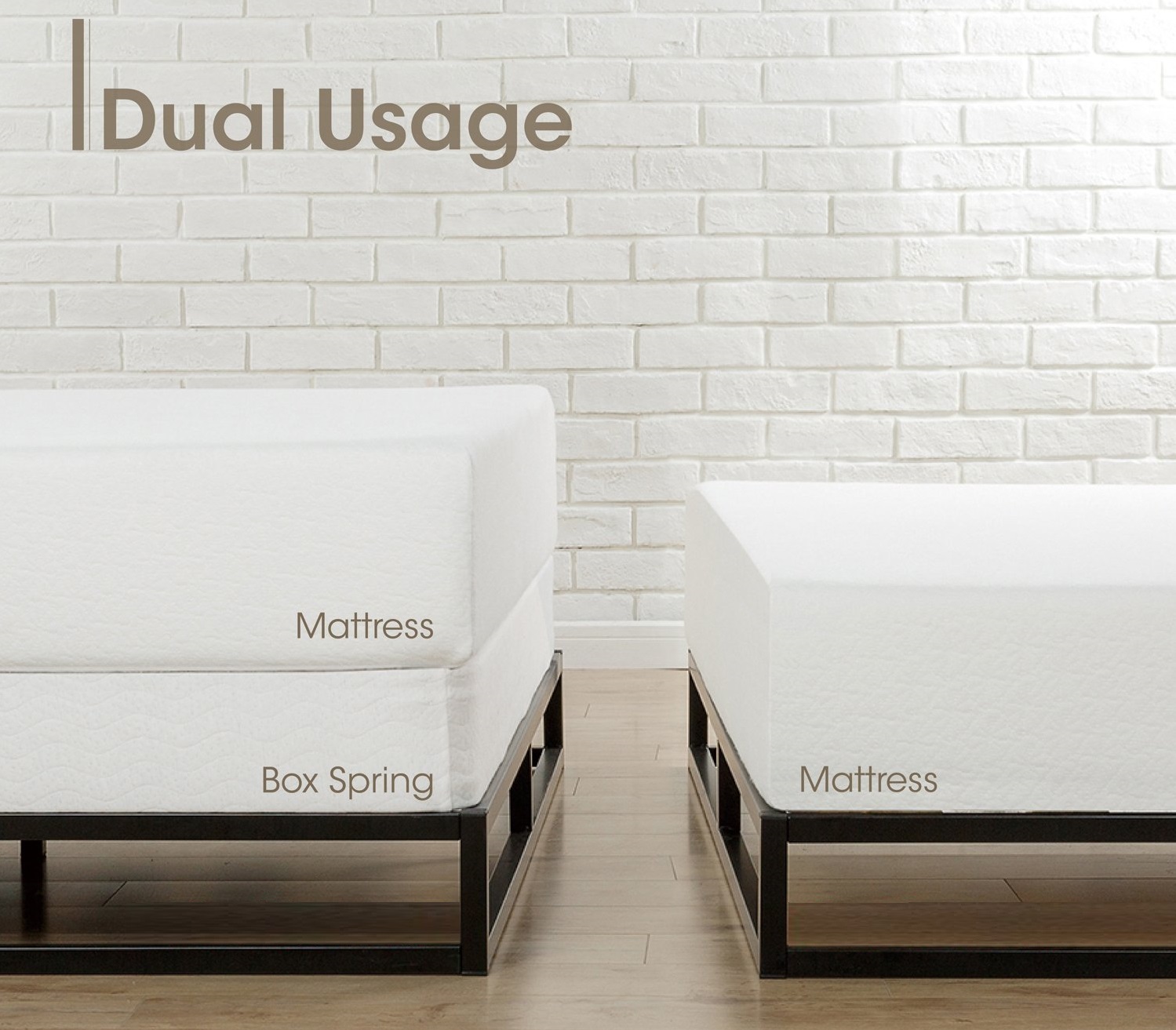In the realm of modern bedroom design, the platform bed has emerged as a ubiquitous staple, exalted for its minimalist aesthetic and functional prowess. This elevated design, characterized by a solid or slatted foundation, traditionally eschews the need for a separate box spring. However, a common inquiry floats through the minds of shoppers and decorators alike: can you add a box spring to a platform bed? The answer is not as straightforward as one might hope, but exploring this question reveals fascinating layers of practicality, design philosophy, and personal comfort.
To embark on this journey, one must first understand the mechanics of a platform bed versus a traditional bed setup. A platform bed is designed to support a mattress directly with its built-in slats or solid surface. This is often a preferred choice for those who appreciate a low-profile look and streamlined design. With their origins steeped in the simplicity of Japanese interiors, platform beds offer a contemporary flair that resonates with a wide demographic. However, their enthusiasts may soon find themselves contemplating the applicability of a box spring—a classic bedding component.
Traditionally, box springs are employed to elevate the mattress, providing additional support while absorbing impact and prolonging the lifespan of the mattress. The spring network within the box allows for a responsive feel, which many still adore when paired with certain mattress types. This leads to the first major consideration: the type of mattress being used. If you are using a memory foam mattress, for example, adding a box spring may not yield the desired outcome. Memory foam is engineered to contour to the body, providing the utmost support without the added bounce that a box spring offers. Herein lies the heart of the matter: compatibility.
Nonetheless, if you find yourself favoring inner-spring mattresses or hybrids that integrate both foam and springs, the prospect of adding a box spring becomes feasible. However, it is crucial to consult the manufacturer’s guidelines regarding the specific mattress. Some mattresses are specifically designed for platform beds and may explicitly advise against the pairing with a box spring, as this could potentially void warranties.
Exploring further, let’s consider the aesthetic implications of incorporating a box spring with a platform bed. Many platform beds come with a strikingly modern profile, often designed to hug the mattress closely and eliminate the need for bulky box springs. Introducing a box spring can disrupt this carefully curated visual narrative. The height it adds can transform the sleek, low-to-the-ground appearance that is often desired in contemporary design. Thus, if your heart is set on a box spring, it may be wise to reevaluate the overall bedroom aesthetic, ensuring harmony between the bed and surrounding décor.
Another critical consideration revolves around the practicality and convenience of such a pairing. Adding a box spring can provide an additional layer of height which may suit some individuals, particularly those who may find it challenging to enter and exit the bed due to age or mobility issues. Elevating the bed can make for easier access, but it’s essential to balance this with the aforementioned design implications. Would a higher bed create an unfriendly environment, dwarfing your other furnishings? Each decision in furniture arrangement reverberates throughout the entire space.
Moreover, let’s not overlook the playful nostalgia that a box spring can evoke. For those who grew up with traditional bed setups, the familiar creak of the springs can conjure memories of childhood comfort. This emotional connection plays an understated role in furniture selection; it illustrates a deeper human inclination towards familiarity and security in our living spaces. So, if adding a box spring brings back those warm reminiscences, it might very well be worth the slight design compromise.
On the flip side, some innovations in mattress technology render the traditional box spring less necessary than ever. Many modern mattresses, particularly those incorporating advanced materials and technologies, are designed to be used on a variety of bases, including platform beds. This speaks to a broader shift within the home goods industry, where multifunctionality and versatility are increasingly prioritized. As consumers become more educated about their options, the distinction between box springs and platform beds may blur, lending itself to hybrid arrangements that suit individual preferences.
Additionally, it’s essential to consider the practicalities of maintenance. Box springs may require periodic inspection for wear and tear, which adds a layer of complexity to the overall care of your sleep system. If you choose to retain a box spring, it is vital to perform regular checks to ensure structural integrity. This is crucial for maintaining optimal support for your mattress and, by extension, your back and posture while sleeping. The health implications of a poor sleeping arrangement cannot be overstated.
In summation, the decision to add a box spring to a platform bed is steeped in multifaceted considerations ranging from aesthetic and practical factors to personal nostalgic connections. The question lacks a definitive yes or no answer, as each individual’s preferences, needs, and circumstances will vary. One might find comfort in the traditional embrace of a box spring, perhaps even reveling in the nostalgia it brings, while another might relish the clean lines and modern flair of a platform bed without the bulk of a box spring. Ultimately, as with many facets of interior design, the most prudent choice is one that caters to both personal style and practical requirements, resulting in a bedroom that is as harmonious as it is inviting.
